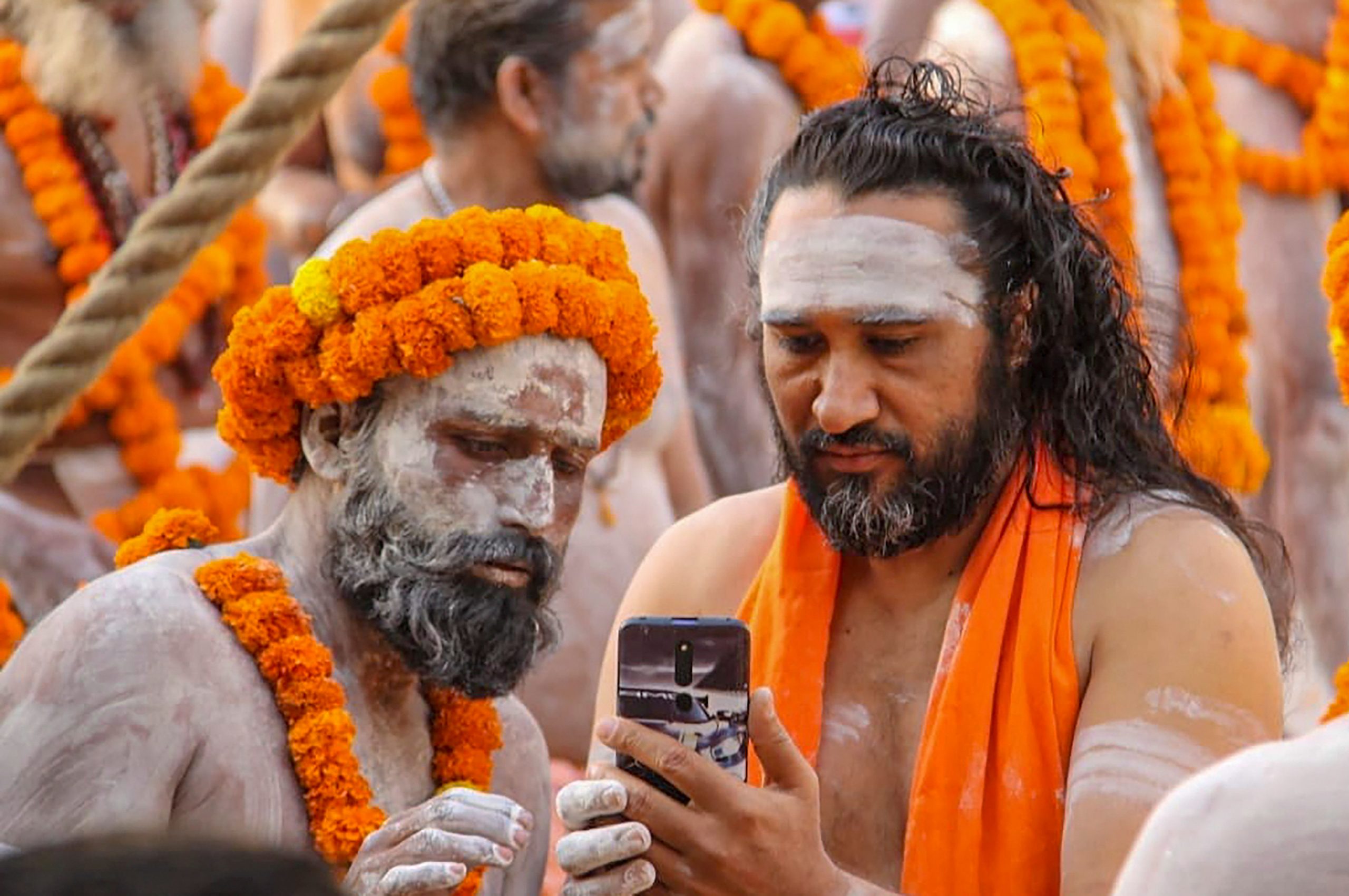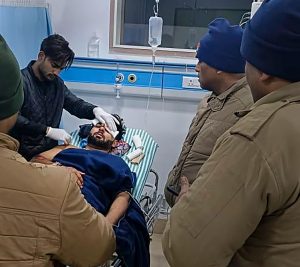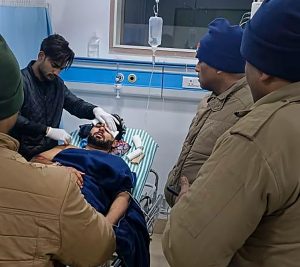The Kumbh, one of holiest events for Hindus, is on and tens of thousands of devotees have taken a “holy dip” in the river Ganges in Uttarakhand’s temple town so far – Haridwar. The event that happens every 12 years has attracted as many as 25 million people to the site since January, including some 4.6 million on two auspicious days of “Shahi Snan” this week alone. What adds to the colour at Kumbh are the all-powerful 13 spiritual sects known as “akhadas”. This group of top seers call the shots at the ‘maha mela’, and this time too they are ones who are divided and deciding whether to go ahead with this physical gathering at Kumbh or do a symbolic mela, as requested by Prime Minister Narendra Modi on Saturday morning.
Also Read | Kumbh Mela returnees to Delhi to be home-quarantined for 14 days
Each akhada, which stands for a group of people who stick together to defend their faith, is headed by a ‘Mahant (chief)’. Let’s take a look at these akhadas (Hindu religious groups) taking part in the religious event.
Shree Panchayati Akhada Niranjani is headquartered in Prayagraj, earlier known as Allahadbad. Most of its members are well-educated. Has members with doctorate and post graduation. This akhara was formed in 826 AD in Gujarat’s Mandavi. The sect follows Lord Shiva’s son Karthik. Headed by Swami Kailashanand Giri, the sect has branches in Allahadbad, Ujjain, Haridwar, Triayambkeshwar and Udaipur. The Niranjani akhada, second largest after Jun akhada, has exited the Kumbh and will observe it symbolically after Nirwani Akhada chief Kapil Dev Das died due to coronavirus.
Shri Panch Dashnam Juna Akhada is a Shaivite Akhada following the Dashnaami Sampraday (sect) founded by Adi Shankaracharya. This is the largest akhada and is attached to the four mutts established by Shankaracharya at Dwarka, Puri, Shringeri and Jyotirmath. This akhada, also known as Bhairav Akhada, was founded in 1145 AD in Uttarakhand’s Karnaprayag. It has its headquarter in Varanasi. The Akhada has a rich tradition of warrior ascetics (Naga Sadhus) who are ordained to this post only during the Kumbh and Mahakumbh Mela. The Juna Akhada also comprises the Astradhari (weapon-bearers) seers and Shastradhari (scripture-bearers) seers. PM Modi today tweeted an appeal to the Juna akhada chief Swami Avdheshanand to observe Kumbh symbolically in wake of the rising Covid-19 cases. He responded in affirmative and asked the people to follow guidelines and not gather in numbers for the holy dip in the Ganges.
Also Read | Kumbh Mela returnees will distribute coronavirus as ‘prasad’: Mumbai mayor
Shree Panchayati Akhada Mahanirvani was founded in 671 AD. According to the people with some knowledge of the akhara’s origin, it was formed in Jharkhand’s Baidyanath town. However, some people say it originated in Haridwar’s Kankhal. The people of this sect worship Kapilmuni Maharaj and the holy symbols Surya Prakash Bhala and Bhairva Prakash Bhala. The akhara has its branches in Allahabad, Haridwar, Ujjain, Triyambkeshwar, Onkareshwar and Khankhal. One legend says that in 1260 AD, 22,000 naga sadhus led by Mahant Bhagwananda Guru freed the temple in Kankhal from invaders.
Shree Panchayati Atal Akhada, headquartered in Varanasi, is among the three oldest akhadas. The akhada, which was founded in 569 AD in Gondwana area in central India, worships Lord Ganesha and the holy symbols of Surya Prakash Bhala and Bhairva Prakash Bhala. The akhada has branches in Kankhal, Haridwar, Allahabad, Ujjain and Triyambkeshwar.
Shri Panch Dashnam Aavahan Akhara is headquartered in the temple town of Varanasi, earlier known as Kashi, in Uttar Pradesh. It is considered the oldest akhada and the sect follows Shri Dattatreya Maharaj and Lord Ganehsa. This akhada, which is also known as Sarkar Akhada, was formed in 646 AD and it was reorganised in 1603. As the name ‘Aavahan’ indicates, the saints of this akhada were the first to respond to the call of the Shankaracharya to devote themselves to the defence of the Sanatan Dharma.
Also Read | COVID-19 second wave: List of helpline numbers in India
Taponidhi Shri Anand Akhara Panchayti is considered the second oldest in the country. Established in 855 AD, the deity of this akhada is Dev Bhuwan Bhaskar Suryanarayan. It has offices and ashrams spread across the country. The akhada, known for its opulence, has branches in Prayagraj, Haridwar and Ujjain. This akhada has also called off Kumbh celebrations and has said that the same would be observed symbolically, given the unprecedented rise in the number of Covid cases.
Shri Shambhu Panchagni Akhara is known for anointing Brahmchari saints. This akhada was established in 1136 AD. The sect worships Goddess Gayatri and is based out of Varanasi, also known as Kashi. This akhada stands out in its customs and traditions as compared to other Shaivaite akhadas. They do not have Naga sadhus but their saints, who need to be janeu or sacred thread wearing Brahmins, can later join other akhadas as a Naga if they so desire. This sect consumes only self-prepared food. The members of the sect include Shankaracharya of all four ‘peeth (monasteries)’, Brahmachari sadhus and Mahamandaleshwar (chief of the sect). The akhada has its branches in Prayagraj, Haridwar, Ujjain and Triyambkeshwar.
Also Read | We go by rituals not government guidelines: Juna Akhada as COVID cases peak
Shree Panchayati Akhada Bada Udasin is known for its grandeur and worships Jagatguru Bhagwan Shree Shrichandra Ji, eldest son Sri Guru Nanak Dev ji. The Akhada was founded by seer Yogiraj Shree Nirvandev ji Maharaj in 1825 in Haridwar. It is governed by members of Shree Panch (A high council of five senior seers who take decisions). This sect has primarily Udasin sadhus (Those who follow the teachings of ShriChandra ji. The sect has its branches in Prayagraj, Haridwar, Ujjain, Triyamkeshwar, Bhadaini, kankhal, Sahibganj, Multan and Nepal.
Shri Panchayti Akhara Naya Udasin has its headquarter in Haridwar in Uttarakhand and is known for its simplicity. The akhada was founded by Mahant Sudhir Das in 1846 after a dispute with the Bada Udasin Akhada. The traditions of this sect are much less showy as compared to other akhadas. Its royal entry processions have no acharya, no palanquin and no spears or arms. The akhada follows Shri Chandra Bhagwan, eldest son Sri Guru Nanak Dev ji. The sect has its centres in Prayagraj, Haridwar, Ujjain and Triyambkeshwar.
Shree Panch Nirmohi Ani Akhada is one of the three Vaishnav akhadas based out of Haridwar in Uttarakhand. It was founded by Ramananda Acharya in 1720 in the small town of Vrindavan, known for its mythological significance. It is a wealthy sect that owns many temples and mathas in Uttar Pradesh. The Nirmohi akhada worships Lord Hanuman and unites 18 Vaishnav groups and four sects with common ideologies. Earlier, the members of the sect were given training in sword wielding and archery. The sect has its centre in uttarakhadn, Madhya Pradesh, Gujarat and Bihar.
Also Read | Devotees gather at Haridwar’s Har Ki Pauri amid surge in COVID-19 cases | Watch
Shri Nirmala Panchayati Akhada was founded in 1784 during Haridwar Kumbh mela by Shri Durgasingh Maharaj. The akhada is linked to Sikhism and follows the teaching of Shri Guru Granth Sahib. As per legend, Guru Gobind Singh had sent a batch of five saffron robe seers (Panch Nirmal Gaurik) to learn the Vedas, Vedang and Dharma-shastra to Varanasi, then known as Kashi. The group after learning vedas formed their own sect by the name of Nirmal Sampraday (A separate sect of Hindus). The sect has its centres in Prayagraj, Haridwar, Ujjain and Triyambkeshwar.
Shree Panch Digamber Ani Akhada includes three major Akharas and followers of Vaishnav or Lord Vishnu, also known as Bairagi Akharas. They have a particular way of greeting each other. The seers of the Akhada are generally dressed in saffron. They travel spreading the message of the ‘Sanatan Dharma’. The sect worships five colour flag and ancient weapons and its primary centre is in Uttarkhand’s Haridwar.
Shri Vaishnav Akhada – The akhada is believed to be founded in 1595 AD in Prayagraj in Daraganj. The three other groups formed along with this were Nirmohi, Nirvani and Khakhi. The primary center of this sect is in Triyambkeshwar, near Nashik in Maharashtra.







